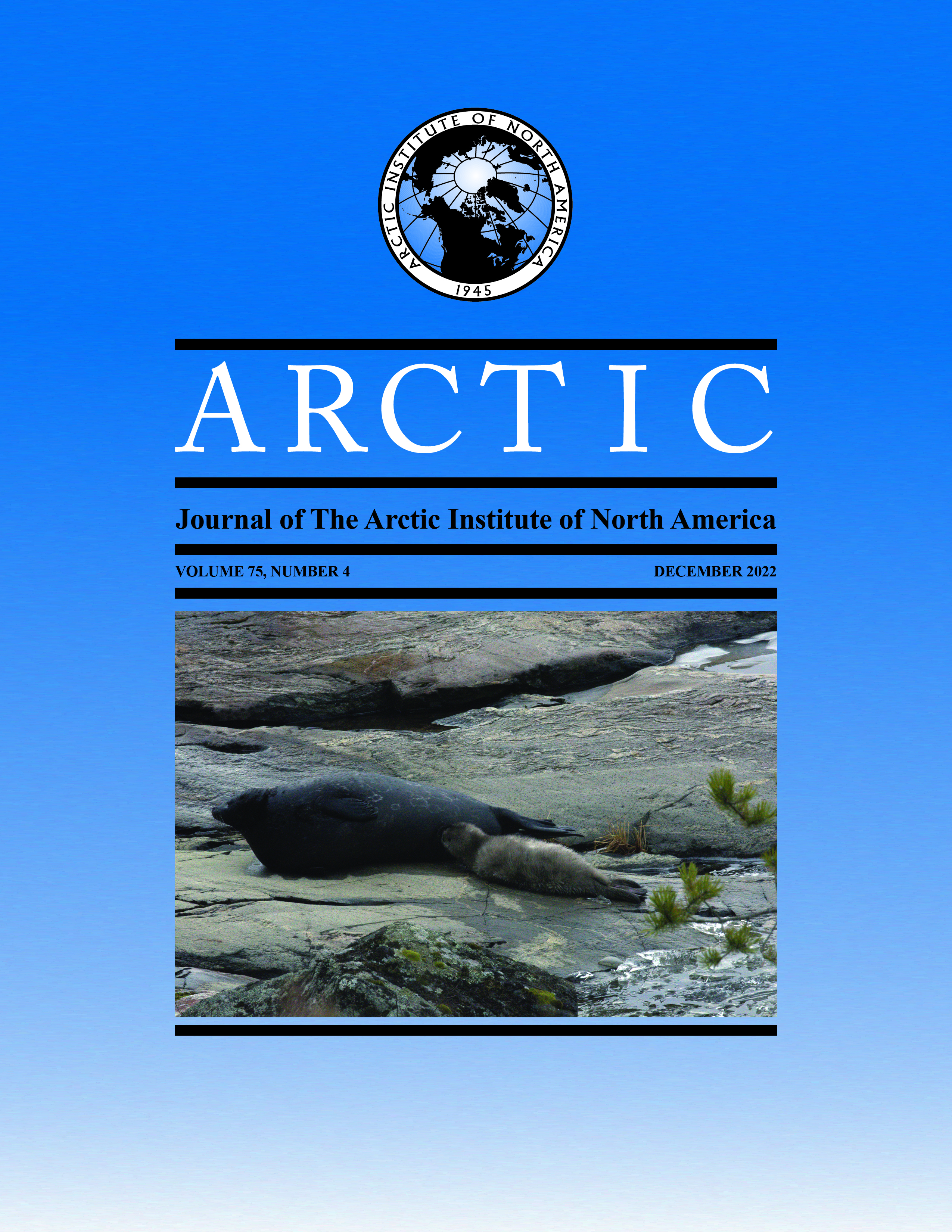The Underwater Soundscape of Minto Inlet, Northwest Territories, Canada
DOI :
https://doi.org/10.14430/arctic76400Mots-clés :
Arctique; son ambiant; bioacoustique; cétacés; poissons; surveillance acoustique passive; pinnipèdes; glace de mer; bruit sous-marin; niveaux sonores sous-marinsRésumé
La surveillance acoustique passive est un outil puissant pour observer les espèces sonifères des milieux marins éloignés sur de longues périodes, ce qui permet d’éclairer la gestion de la faune et la planification de la conservation. Dans le cadre de cette étude, nous avons recueilli des données acoustiques passives échelonnées sur sept mois, du début de février au début de septembre 2019 à l’inlet Minto, dans les Territoires du Nord-Ouest, au Canada, dans le but d’examiner la présence saisonnière de quatre espèces de mammifères marins et d’espèces de poissons non identifiées, de nous pencher sur les facteurs à la base des niveaux sonores sous-marins et de quantifier le bruit sous-marin émanant de la circulation des navires. Le son des phoques barbus s’est fait entendre de la mi-mars au début de juillet. Les phoques annelés étaient présents pendant chacun des mois. Les bélugas étaient présents du début de juillet jusqu’en septembre. Des baleines boréales ont été détectées d’avril à août, et des poissons ont été décelés de février à juillet. Les niveaux sonores sous-marins ont été étouffés par la présence de glace de rive rapide et se sont accrus avec la vitesse du vent. L’intensification des vocalises du phoque barbu a également eu pour effet d’accroître les niveaux sonores. Le seul navire détecté a été le navire de recherche qui a récupéré l’enregistreur acoustique. Les niveaux sonores sous-marins étaient nettement inférieurs dans l’inlet Minto comparativement aux autres zones de la région. Il semble qu’il s’agisse d’un lieu privilégié par de nombreux mammifères marins et où les espèces de poissons à fourrage, principalement la morue polaire, abondent en profondeur. Ces résultats concordent avec la grande importance qu’accorde la communauté d’Ulukhaktok à l’inlet Minto. En ce moment, l’incidence anthropique sur cet endroit semble très faible, mais d’autres travaux de surveillance s’imposent afin de déterminer s’il y a lieu d’adopter des mesures de gestion pour maintenir ces faibles niveaux.



